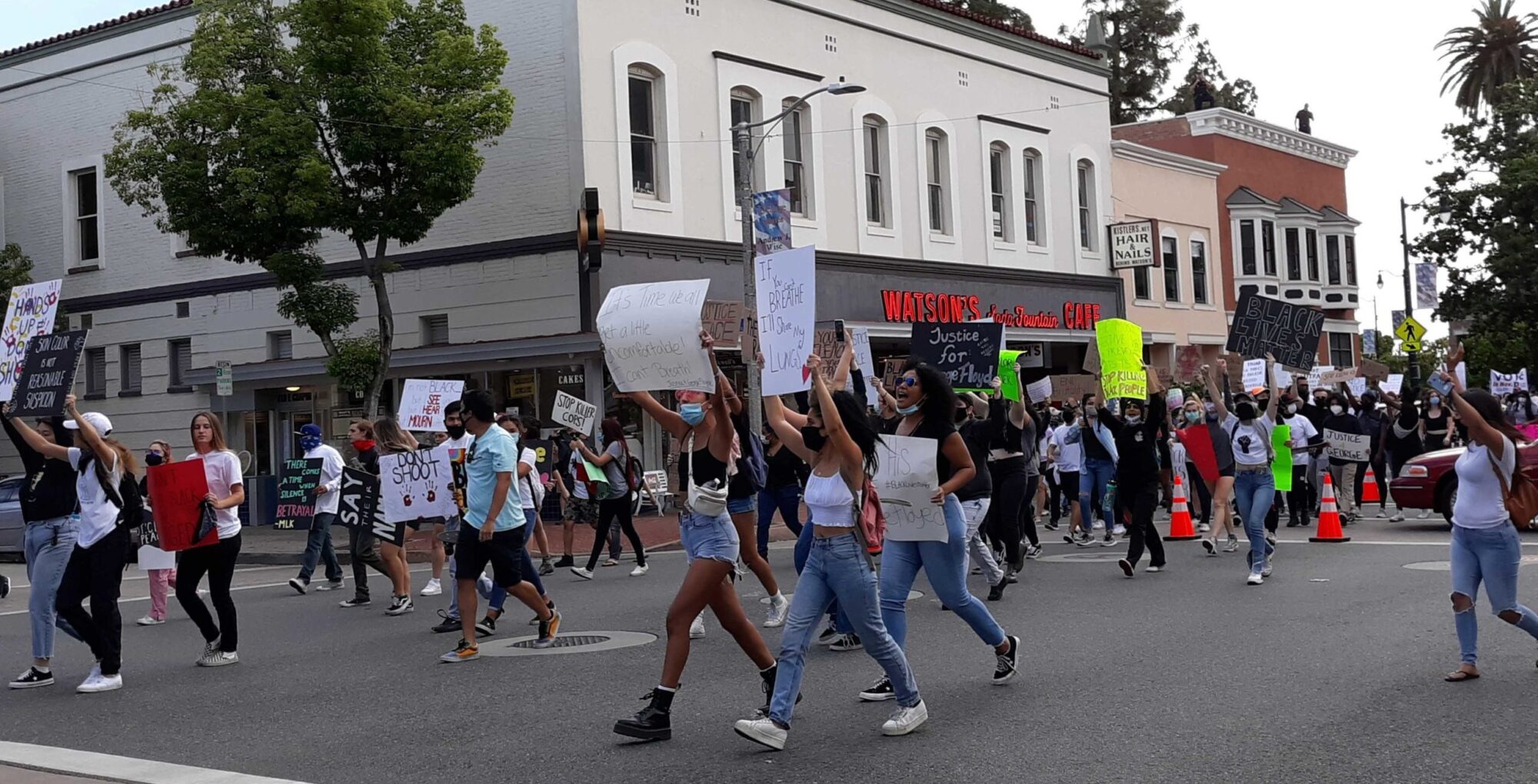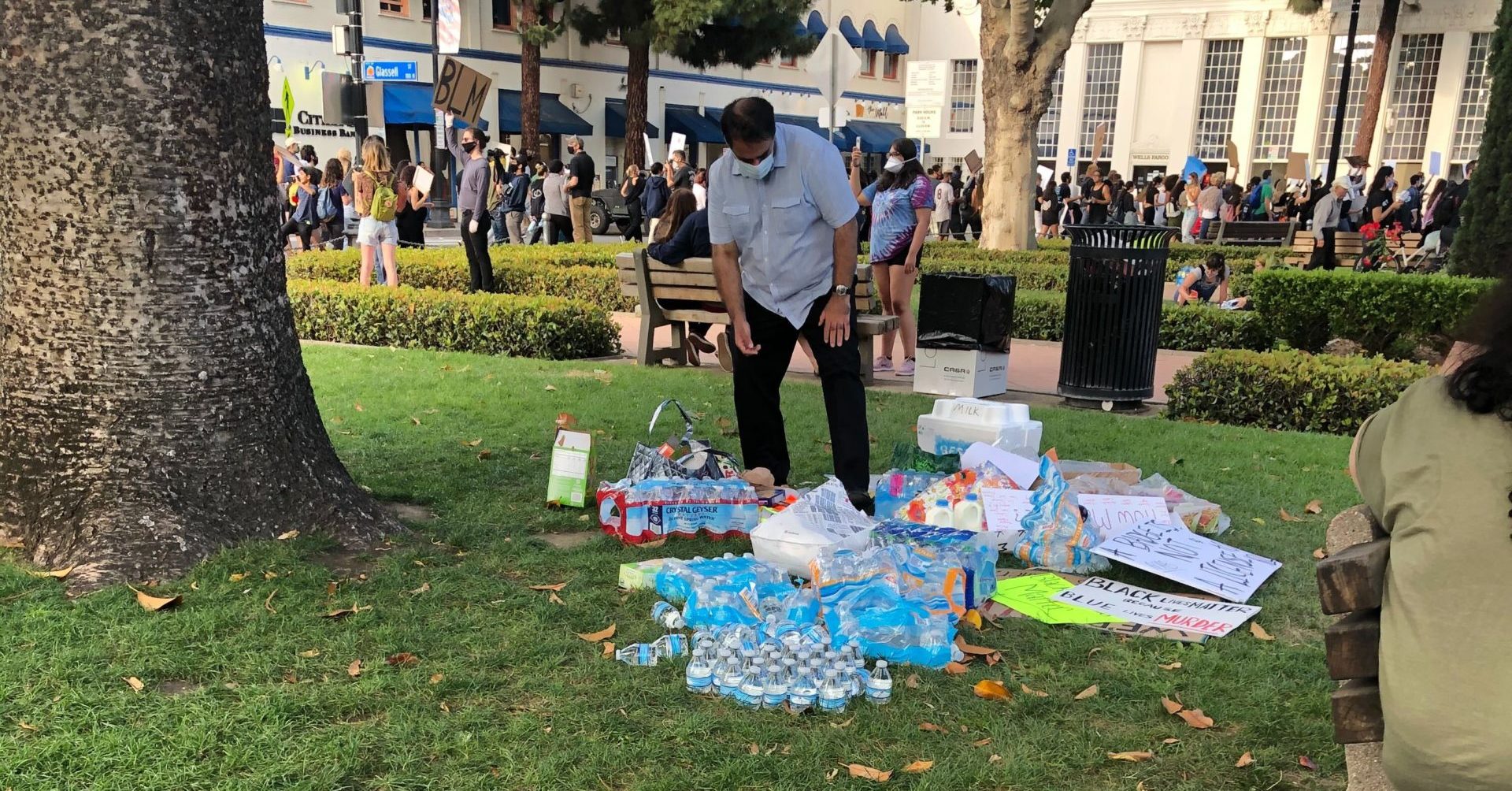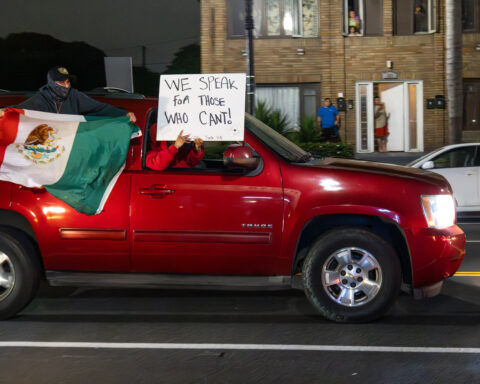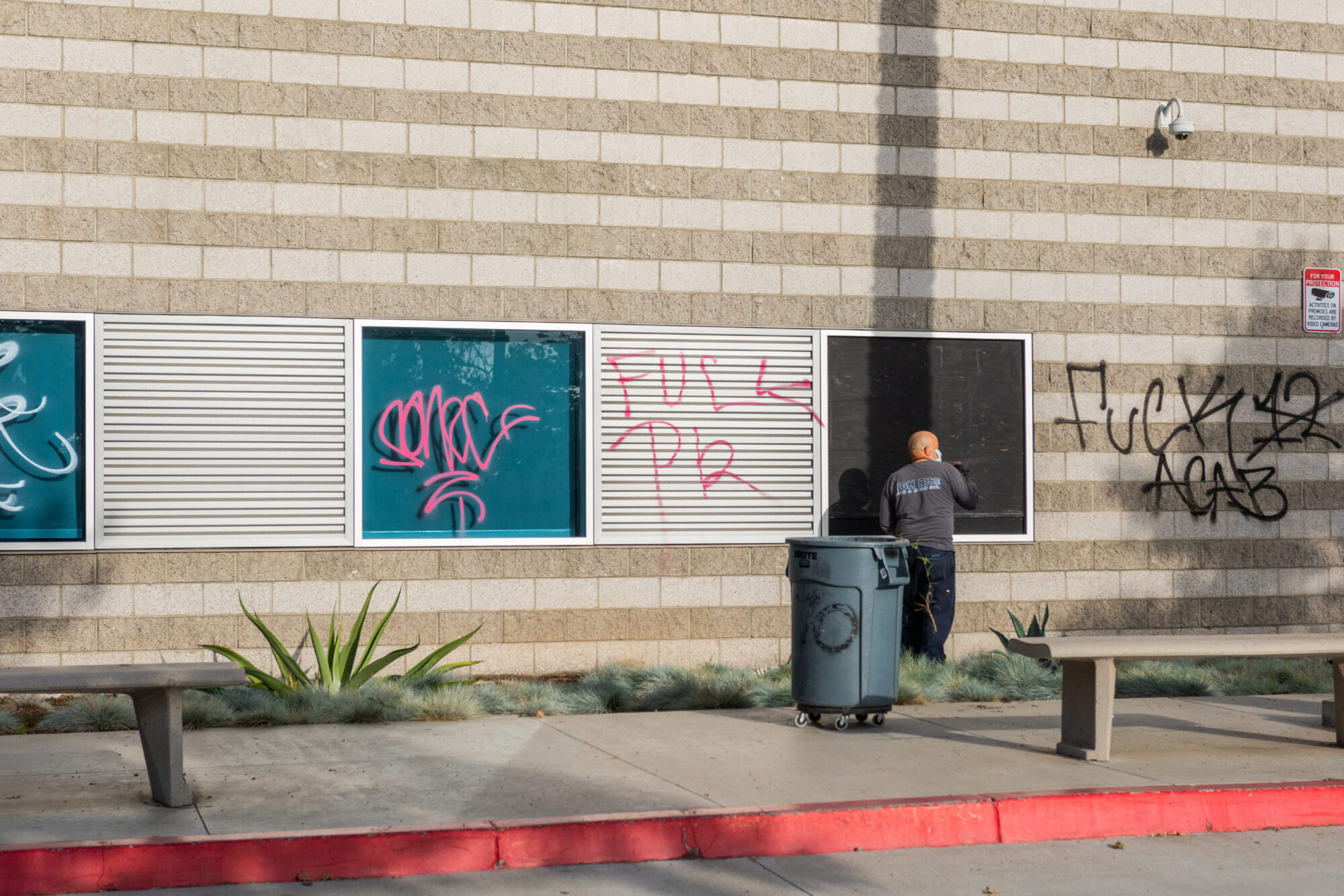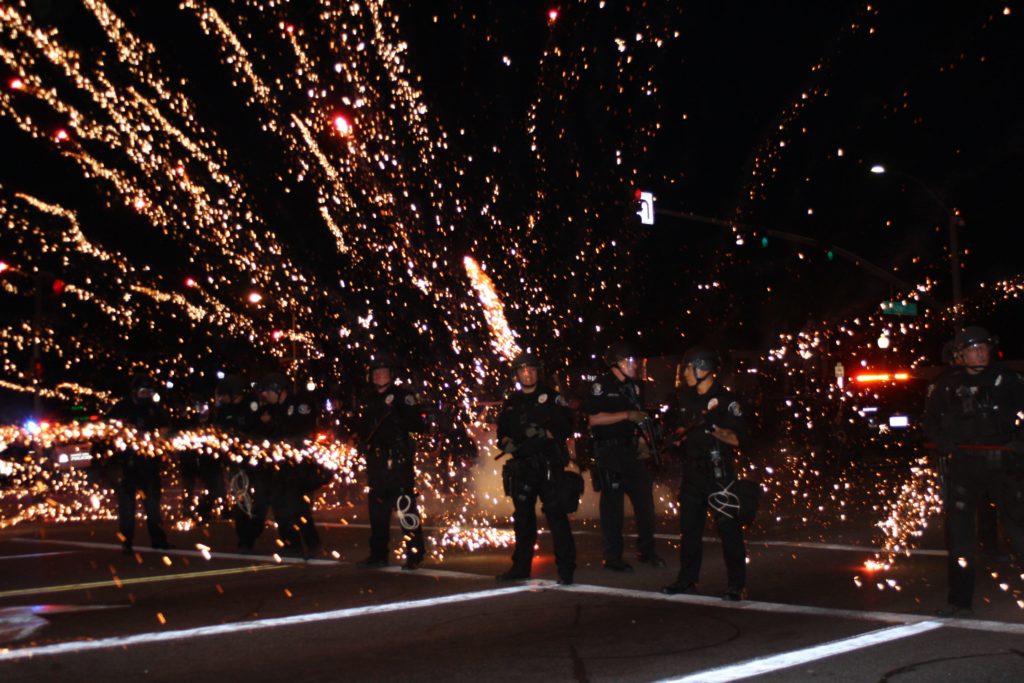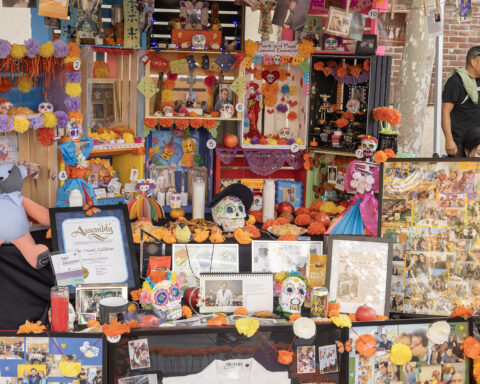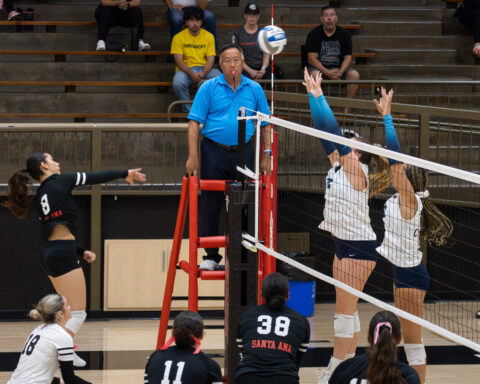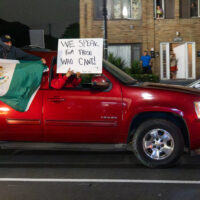At least six protests against police violence happened in Orange County over two days last weekend, starting in the Orange Circle with meetups scheduled at 1 p.m. and 4 p.m. The local demonstrations emerged after days of large gatherings in cities across the country to protest the death of George Floyd, a Minnesota man who died after being pinned under a Minneapolis Police officer’s knee for nearly nine minutes.
el Don sent four staffers to the Orange Circle to talk to protestors and document the scene. The outrage was still fresh for many on staff and for some, it was their first time attending a protest. In the interest of full transparency, we are not publishing a traditional news article based on their reporting, but instead are letting each staff member recount what they saw and who they spoke to in their own voice. The accounts are presented in the order the staffer arrived.
Laura Diaz
Arrived: 1 p.m.
Arriving in Orange to attend a protest felt like trespassing. This was never a city I felt welcome in. Even if I’ve lived in Orange County my entire life; even if my lighter skin color would conceal the fact I am Mexican, I was scared. I hoped my press pass, which was clipped to my shirt, would be enough to ward off anyone who believed me a threat. Minorities dressed in black never bode well in affluent areas.
But when I saw people already gathered at the destination, I felt relief. These were people I could trust. These were my people. Not just Latinos, but simply people who saw the world the way I did. People who also ached for change and justice. I didn’t know a single person within that crowd and yet I knew that many of them would protect me if necessary, and I felt equally towards them.
A true melting-pot of people gathered at the Orange Circle in response to the death of George Floyd. Although the city of Orange is predominantly older and white, protestors of all ages, ethnicities, and beliefs made their voices heard.
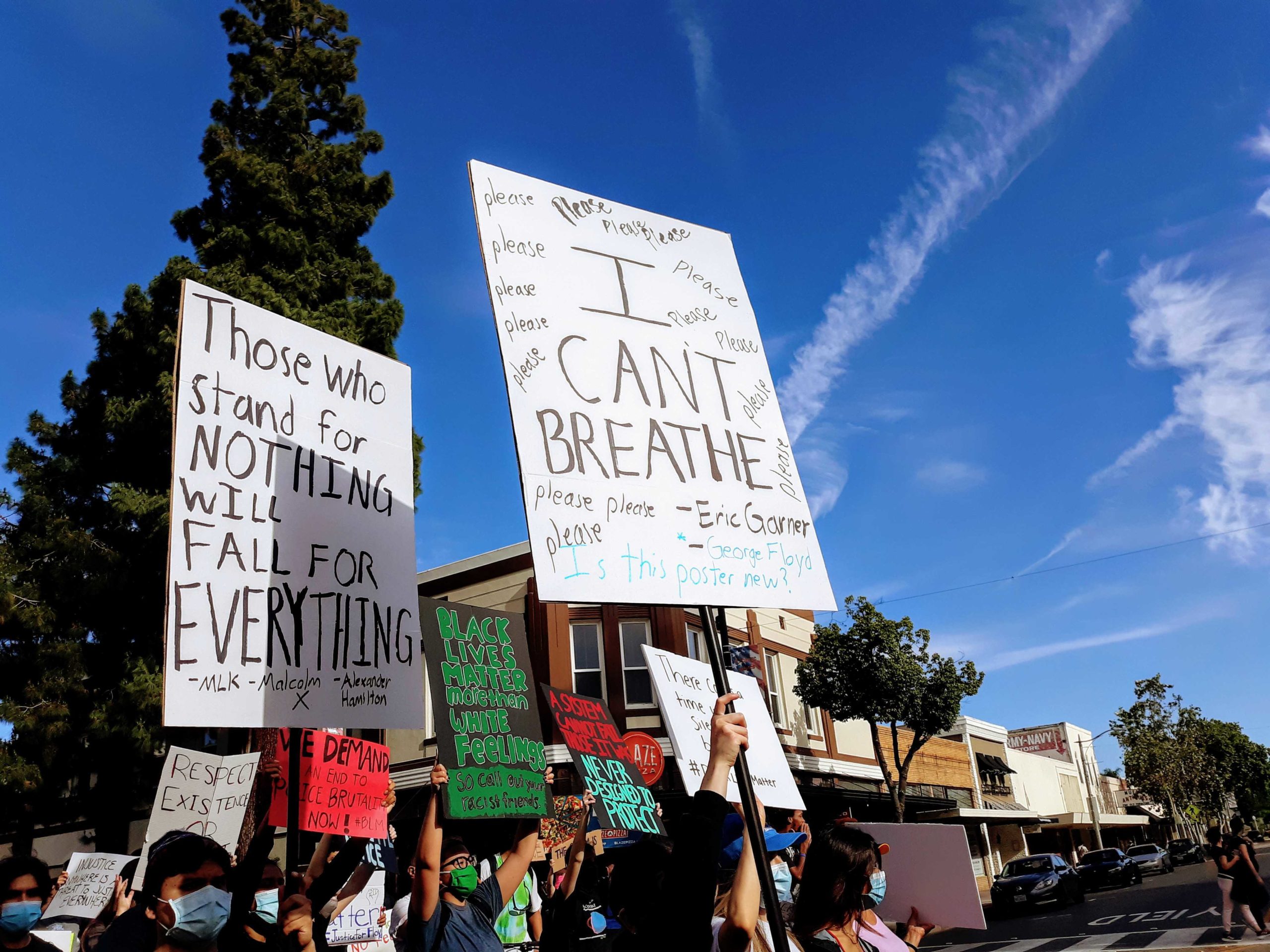
The chanting started early, even before the allotted time of 1 p.m. Shoppers and casual park-goers watched from afar, unsure if it would stay peaceful. A young woman stood up on a bench with a megaphone and began to lead the crowds into a chant.
“Say his name!” she yelled, her voice audibly straining to be heard above the honking cars.
“George Floyd!” everyone in Orange Circle Park responded.
Organizers of the event, some whom were affiliated with the Palestinian Youth Movement and the People’s Revolutionary Party of Long Beach, wore green vests and monitored the park. They encouraged people to remain 6-feet apart, at least while there was enough room to do so. In time, the park was too crowded to respect social distancing guidelines, but even the threat of COVID-19 didn’t stop anyone from having their voice heard.
“We’re kinda sick of seeing our human brothers and sister face injustice everyday,” said protester Amber Kennedy. It was the first time she and her friends had attended a protest.
“How did you feel when you saw the story about George Floyd?” I asked.
“Angry,” they all agreed.
“The fact that white police have that authority and can abuse it at any time, at almost any moment..” Noah Whittaker added before trailing off.
At 2:30 p.m., the crowds started to move around the park, forming a line and focusing their attention on the cars driving by. A caravan of protesters walked counterclockwise around Orange Circle, chanting as they crossed the intersections. At this point, it was difficult to navigate through the park without nearly falling into the bushes.
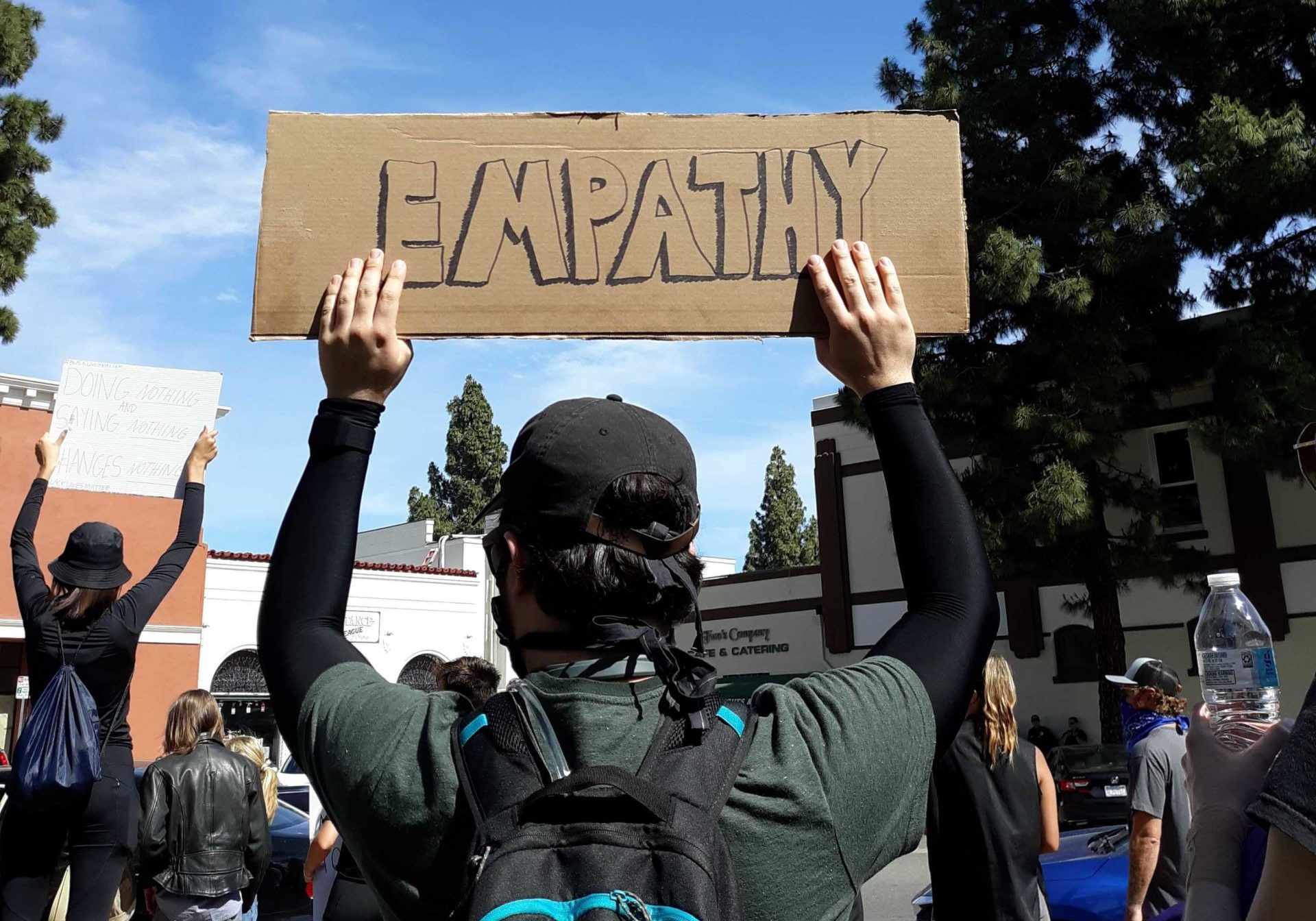
Dylan Allen
Arrived: 2 p.m.
As I walked north on Glassell Avenue from Almond towards the Orange Circle, the energy in the air increased with the noise. At first count I saw a dozen police officers, and as I made my way into the Circle, I noticed four more on the surrounding roofs.
The first woman I talked to was Shaya Ghazinoor, 46, from Newport Beach. She was wearing a Colin Kaepernick jersey and carrying a white sign that said “ENOUGH” in capital letters.
“I’m fed up. That’s why I’m here,” she said. “I’m hoping we can get people to register to vote. My ultimate hope is that we can make changes, starting at the local level with prosecutors and city councils and moving up and up from there.”
People walked around handing out water bottles and granola bars to the crowd. Food and other drinks were stashed in the shade of the park, including a few bottles of milk that were set aside.
Monique, an Orange resident who did not want to use her last name, carried a sign that read “Stop killin’ our people.” Monique is a young black woman, a demographic that represents just 2.1% of the county.
“We felt really passionate about the topic,” she said. “It’s been invigorating. If there’s anything we can do at all, I feel like this is the one thing that we can do.”
The crowd grew in size as people arrived for the 4 p.m. protest and the emotion of the group was palpable. It led to tension between protestors and the few critics on the sidelines, but nothing got physical. Orange Police made no attempt to intervene in the protest.
As the crowd took over the inner lane of the traffic circle, I also spoke to a young black man named Buku.
“I came to show support,” he said. “I want justice for brown people all over. A lot of people get mistreated and there’s no justice about it. It’s unacceptable that this has been able to continue through the years.”
By then, Orange PD had left the main intersection and blocked off connecting streets, allowing protestors to take over the entire street as it circles around the park.
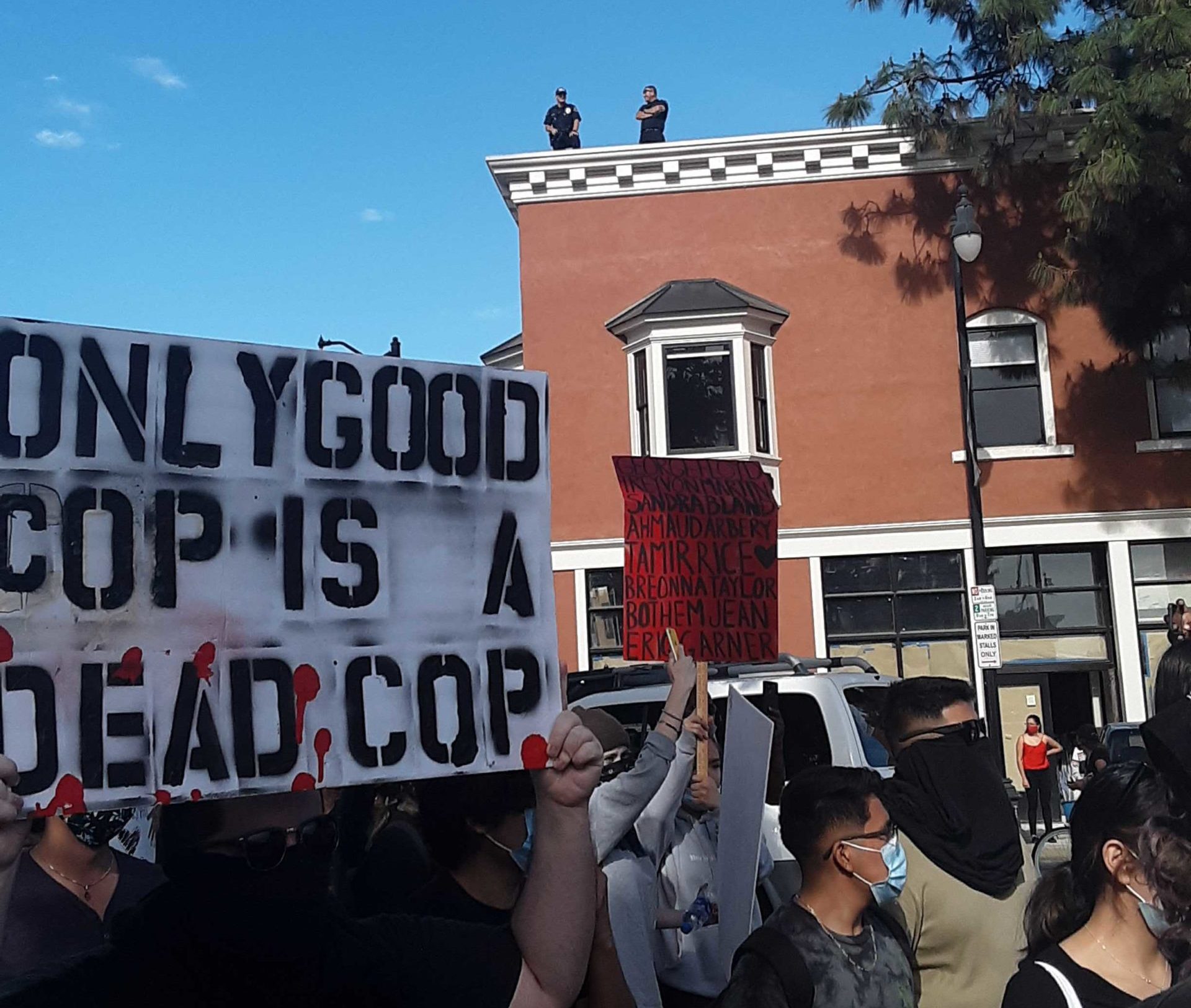
Sarah Harwell
Arrived: 2 p.m.
Since this was my first ever protest, I wasn’t sure what to expect. I saw on social media that there would be police on the rooftops and that there were organizers who were police officers themselves, which worried me because I was going with my boyfriend who is Mexican and Assyrian. Being Asian, I’m aware that the color of my skin is a shield, so I worried more than anything for him if the protests were to get violent. Friends reassured me that the protest would be peaceful, which encouraged me even more to go, as I was opposed to going at first.
I grew up in an extremely conservative household, so I was never allowed to go to protests or rallies before this, even though I’ve participated in virtual activism as much as I could. The protest was full of people of all backgrounds. I felt safe and that it was peaceful, and showing respect as well as my anger.
Because I don’t usually write news, I originally went to participate in the protest, but once there, I started reporting. I asked a few people their opinions about where they were from and how they felt about the protest, especially because Orange is predominantly white. There was a group from Hawthorne, in L.A., who whad traveled to the Orange Circle for brunch, but ran into the protest instead. Visitors Ashley and Jane said that they were surprised about the support and love that they felt from this area.
After asking a few people some questions, I felt compelled to return to my original intention: to protest. I quickly found Dylan and gave him my press pass and my notebook, and ran into the marching crowd with my boyfriend. We walked around the circle, chanting and yelling, for about two hours, before my heel started bleeding and we retreated to the car. Then, we drove around the Circle as I stood out the sunroof.
After this initial experience, I felt compelled to go to even more protests and stand up as an ally.

Emily Hernandez
Arrived: 3:30 p.m.
I’ve had to take time to process everything that is going on in the country and in our county right now. Unfortunately, I did watch the footage of George Floyd’s death online. The brutality I saw from the police officer and the ones who stood by was sickening. There’s a feeling of hopelessness that comes with seeing a man being knelt on while he is unconscious and no way to change what is happening.
Like Sarah also mentioned, I also grew up in (and still live in) a very conservative home. My family does not condone racism but they also do not encourage political involvement or the attendance of protests. In a way, I did have to sneak out to attend the protest. If I would have told my parents where I was going, I don’t know what the consequences would have been (most likely discouragement toward attending and reliance on spiritual things). The house I live in is politically neutral and does not vote.
I was so nervous about leaving I just went out the back door and forgot my mask. When I made it to the bus stop on Bristol Avenue, I realized I forgot my mask so I used my shirt to cover my nose and mouth.
Once I got to the Orange Circle, I met up with Dylan and Sarah, who had supplies from the newsroom, including notebooks and staff shirts. Being out there with a group made me feel safe and part of a team that truly cared about reporting so that our community knows what is going on.
Protestors were gathered in the center of the Orange Circle and many marched around it. Cars honked from every direction and signs sprouted up over the heads of the many protestors. My first instinct was to stay quiet and observe. As I looked around, I saw people of every race, nationality and dress. The protestors chanted loudly, “I can’t breathe,” and “No Justice, No Peace.”
The first person I approached was Noah Mical, a 23-year-old Black woman from Cypress. Her sign was painted black with white letters and red paint splatters reading, “Stop Killin’ Our People.”
“The problem is not just one incident,” Mical said. “What we’re saying is nothing new, we’ve been saying this for years and we want action. What America doesn’t understand is that we are just asking for equality.”
The second person I approached was an Orange local, 23-year old Obeydah Darwish. She expressed her desire for Orange County to become more politically active and less passive. Her sign read, “Hold Orange County law enforcement accountable.”
“I’ve lived in Orange County for 23 years, and I feel like this area specifically has very little political action we’re very passive,” Darwish said. “I think part of it has to do with this being a wealthy area and there’s not a lot of need for political change.”
“I know a lot of people that were considering going to the L.A. because of different reasons. But I told them that it’s important that if we live here, we need to go to the ones here. We need to change the idea that Orange County is passive and there’s no political action.”
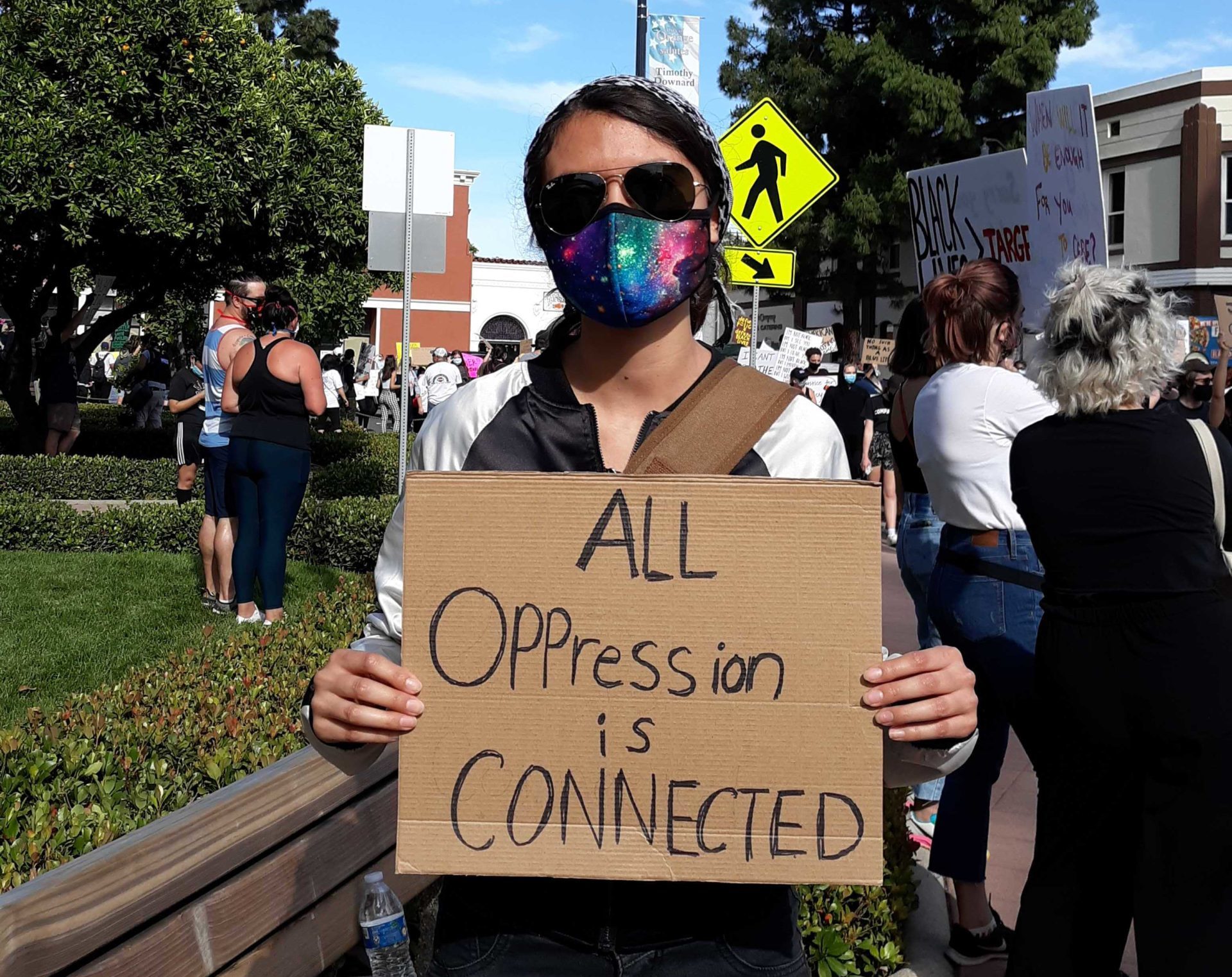
The third person I interviewed was 20-year old Meranthy Meza, a women’s studies major at Santiago Canyon College in Orange. She was holding a sign that said “Intersectionality” on one side and “All Oppression is Connected” on the back.
She was standing by a bench watching the crowd march by and holding up her sign. The only concern she had was about being safe from COVID-19 but decided that protesting while social distancing was important.
“I was a little nervous about attending but I have my mask and I’m okay,” she said.
- Inside el Don’s 2025 Immigration Issue - October 14, 2025
- Talk to us! We’re community reporters - October 14, 2025
- Local punk scene provides support during ICE raids - July 17, 2025


